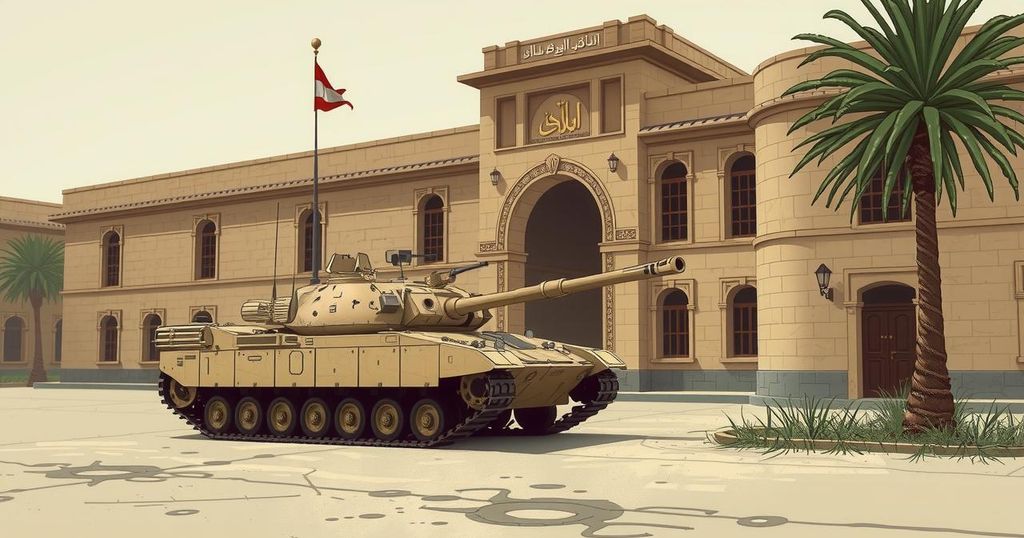Trump’s Regime Change Suggestion for Iran Echoes Past U.S. Military Warnings

President Trump’s recent comments on potential “regime change” in Iran echo historical U.S. military interventions that often led to unforeseen complications. Historical instances illustrate that initial military successes may yield deeper conflicts, and calls for internal revolt against Iran’s government raise questions about the efficacy and consequences of foreign involvement. Public sentiment appears mixed, complicating the prospect of any regime change.
As President Donald Trump suggests a potential “regime change” in Iran, historical U.S. military interventions in the Middle East cast a long shadow over this proposition. Past efforts to forcibly reshape this complex region have often led to unintended consequences. After a recent U.S. strike on Iranian nuclear sites, Trump’s provocation follows Iran’s missile retaliation against a U.S. base in Qatar, prompting further speculation around escalated military actions.
On his social media page, Trump questioned the legitimacy of the Iranian regime: “If the current Iranian Regime is unable to MAKE IRAN GREAT AGAIN, why wouldn’t there be a Regime change???” White House Press Secretary Karoline Leavitt clarified that this is not a departure from Trump’s past stance on military engagement, which characterized “forever wars” as futile.
Leavitt suggests that potential regime change could emerge from internal unrest among Iranians themselves, rather than direct intervention by the U.S. She implied that the Iranian populace could rise against the government if diplomacy failed: “If they refuse to engage in diplomacy moving forward, why shouldn’t the Iranian people rise up?”
However, previous lessons illustrate that such outcomes are complex and often fraught with difficulties. U.S. military triumphs have frequently given way to protracted conflicts. For instance, U.S. forces successfully ousted the Taliban from Afghanistan shortly after the 2001 attacks but faced an insurgency that lasted two decades. Similarly, the initial military victories in Iraq led to a chaotic aftermath, marked by sectarian conflict and internal strife.
It’s worth noting that while Israel has conducted efficient airstrikes targeting Iranian military capabilities, Trump’s claims about the success of these operations are complicated by the presence of Iran’s formidable military forces. Consequently, the prospect of durable peace or stability in Iran could be more challenging than it appears.
Experts warn that airstrikes without ground support have historically fallen short. Take the case of Libya under Gadhafi: despite an extensive NATO air campaign in 2011, it was ground forces that finally cornered him. With no established insurgency in Iran capable of challenging the Revolutionary Guard, a larger military intervention could be necessary. But, it would be exceedingly risky.
Public sentiment in Iran also remains uncertain. Although many citizens may harbor animosity against their government, memories of past war and external intervention—such as the Iraqi invasion of 1980—could lead to nationalist feelings prevailing, pushing citizens to unite rather than rebel. So far, many Iranians have remained passive, with an observable trend of migration from the capital.
In short, the notion of regime change in Iran, as proposed by Trump, raises multiple concerns rooted in past U.S. military interventions that have often ended in chaos and prolonged conflict. While there are calls for internal revolution, historical patterns suggest that foreign intervention is rarely straightforward or beneficial. As the complex web of Iran’s political landscape unfurls, the outcomes might not favor the United States’ interests—or those of ordinary Iranians.
Original Source: apnews.com







